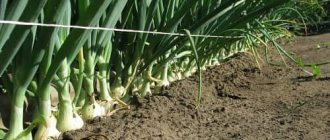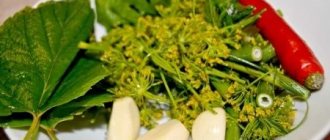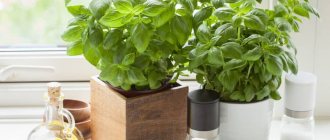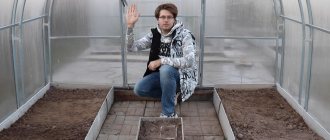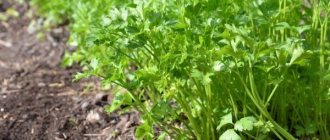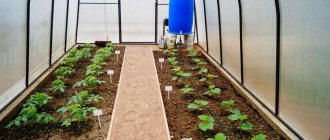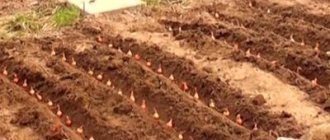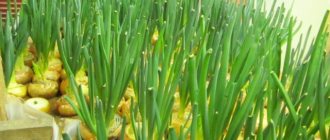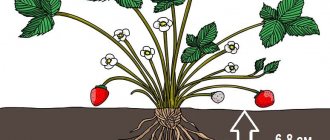There are a huge number of recipes for preparing basil for the winter, the main thing is to choose the best one, then you will love the useful plant with sincere love and forever. A tasty spicy plant can be used in almost all areas of cooking. But, since our climate is such that fresh herbs can be consumed for a fairly short period of time, our housewives found the right solution - they prepare basil at home for future use.
The number of recipes for preparing the plant is impressive. Basil is salted and pickled in jars. You will be surprised, but there is a basil compote. Experienced housewives make various seasonings, sauces, pastes, even adjika, and cook syrup. The famous Pesto sauce can also be prepared during the green season, straight from the garden, and enjoyed all winter long. To preserve the natural aroma and maximum amount of vitamins, the plant is frozen or dried. The main thing is to do it right. Here are the best recipes for basil preparations, choose, stock up on raw materials and go ahead!
How to prepare basil for the winter to preserve its aroma and vitamins
In order not to spoil the raw materials and not waste time, be sure to familiarize yourself with the nuances that will help you correctly prepare a useful plant.
First, let's figure out what kind of basil is processed for winter preparations.
- In addition to the purple and green types of plants that are popular in our country, there are several more that are ideal for processing and canning. These are fragrant, clove, caramel, vanilla, menthol, lemon, clove-pepper and marinade varieties.
- Purple and green basil are unpretentious to grow, their taste and aroma are pronounced, so they are often processed. The remaining species have their own characteristics, which their names will tell you about. So, for clove, if you rub the leaf, a clear aroma of cloves will appear, and for lemon, the natural smell of lemon will appear. And so on. Thanks to these features, the taste of the preparations will change accordingly.
- If you want to make the most aromatic preparation, collect the raw materials before flowering begins. This is especially true for lemon, caramel, clove, vanilla and menthol varieties. After inflorescences appear on the plant, its taste and smell noticeably deteriorate.
- If you grow your own basil, pinch out the tops regularly. Thanks to this simple manipulation, the plant will slow down the onset of flowering, produce more side shoots and, accordingly, succulent leaves.
- In order not to spoil the raw material, while maintaining its benefits and aroma, strictly follow the recipes and follow all the rules, especially when drying and freezing basil.
Finally
These were the four easiest ways to prepare delicious basil, but the housewives’ ideas don’t stop there. Some people freeze crushed leaves in water to make ice cubes. Another recipe uses meat broth instead of water. A popular method is pre-blanching. To do this, the basil is peeled and lightly doused with boiling water.
Thawing basil is as easy as freezing recipes. If you are cooking on the stove, then simply add a cube of greens to the dish. To dress a salad with whole leaves, long defrosting is also not required.
Remember that the longer basil is stored, the less vitamins it contains. Try to use the preparations before spring, and soon a new harvest of early greens will appear.
How to properly dry basil for the winter
An ideal way to preserve all the vitamins and other beneficial properties of the plant, as well as its incomparable smell. A properly dried basil stem does not bend, but breaks easily with a characteristic crack.
Initial activities:
- For harvesting, take young stems with leaves.
- Rinse the greens thoroughly in several waters.
- Place on a paper towel to drain most of the water.
Next, choose one of five methods for drying raw materials.
Method No. 1. Drying basil in bunches.
It’s good if your farm has a shed with a shed, as well as a fairly spacious pantry for storage. Plus, hot summer days for several days.
- Gather the raw materials into a bundle and tie securely with thread.
- Hang in a shaded and well-ventilated area. Turn the raw material periodically to ensure even drying.
- Approximate drying time is 2 weeks.
- The workpiece is stored in bundles or in a paper bag.
Method No. 2. Drying raw materials with twigs.
A good option, but first make sure that there will be no rain for several days.
Carry out the necessary procedures - wash the plant, let the water drain.
Place in a single layer on a baking sheet lined with parchment paper.
It is advisable to mark the raw materials under a canopy, in the shade. Be sure to cover the basil with gauze or paper, hiding it from insects.
Method number 3. In the oven.
The advantage of this option is that drying of raw materials can be carried out quickly, in a city apartment, regardless of weather conditions.
- Place the prepared raw materials in the oven, turn it on at 40 o C.
- Open the door slightly to allow moisture to escape - this is a prerequisite for proper preparation of basil.
- When the greens have reduced in size by about 2 times, increase the oven temperature to 70°C for 5 minutes.
- Dry until done, turning the branches from time to time.
- Turn off the oven, but do not remove the plant; leave until the oven cools completely.
Method number 4. Leaves.
- Pluck the leaves from the branches and place them in a single layer on a baking sheet, lined with parchment.
- Dry at room temperature until the raw materials are ready.
- If necessary, the plant can be dried in the shade on the balcony or in the garden.
- Store dried basil in paper bags or cloth bags in a cool, dry place.
Method No. 5. In an electric dryer.
- Carry out standard preparation of raw materials. Place it in a thin layer on pallets.
- Set the temperature to 35 o C. Turn on the timer for 1 hour.
- After the signal, swap the pallets and turn on the timer again.
- Total drying time is 4 hours.
Preparation for storage
You will be able to preserve basil for as long as possible and with the least loss of useful elements only if you harvest the plant correctly.
To do this, it is important to follow a few simple rules:
- the process of pruning branches should be carried out only in dry weather, preferably in the morning, as soon as the dew has dried;
- to get a delicate and juicy taste, you need to collect greens from those bushes on which flower buds have not blossomed;
- You need to cut the branches to a maximum of 15 centimeters - it is in these areas that the most useful and tender leaves grow;
- Pruning should be done twice a month - this way you can get young leaves and make a spreading bush.
The most suitable varieties for long-term storage:
Magic Blue;- Magic white;
- Yerevan;
- Ararat.
However, it is worth noting that other varieties of basil have the ability to be stored for a long time, but with careful adherence to the technique. Read about the varieties and types of basil here.
The collected plant needs:
- rinse gently under running water;
- place in a colander until all the water has drained;
- then place the greens on a paper or cloth towel in a thin layer until completely dry.
If there are dry, yellowed or damaged leaves on the branches, you must get rid of them.
Basil compote - the best recipe
I advise you to take a green and a purple variety of the plant, and you will get two different tastes at once.
Take:
- Basil, green, purple - a bunch each.
For a 3 liter jar:
- Granulated sugar – 300 gr.
- Citric acid - teaspoon.
Step by step recipe:
Fill the jars half or 2/3 with leaves and twigs (depending on this, the drink will become richer).
Add the required amount of granulated sugar.
Discard the citric acid.
Boil the required amount of water and pour it into the cylinders.
Roll it up right away. Take the jar in your hands. To dissolve the sugar, shake and rotate the container several times.
Turn the workpiece upside down and wrap it warmly in a blanket. Leave to cool slowly overnight. The next day, be sure to check if the syrup is leaking. Store the drink in a cool place.
Selection and preparation
Fragrant greens are available in abundance in markets and supermarkets. It can be grown in the country without any problems. In the evening, the bushes are watered, and in the morning they are collected: succulent young branches without flowers are cut off with sharp scissors. During the night, the leaves absorb all the moisture, acquire elasticity and juiciness. These greens are used for freezing.
Harvesting basil for drying is done during the day without prior watering. The bushes easily emerge from dry soil. The collected branches are inspected, dry and diseased leaves are picked off. For preparations, whole branches or only leaves and flowers are used.
The greens are washed under the tap, thoroughly washing away dirt, dust, and insects. Then dry between two layers of paper or waffle towel or in a lettuce dryer.
Reference. In Italy, basil was considered a symbol of love, and in Romania, a branch of basil, accepted by a young man from the hands of a girl, meant consent to marriage. In Mexico, there is a belief that the plant protects married couples from infidelity.
Pickled basil for the winter
Pickled basil is a component for preparing salads, main courses of meat and fish. As a rule, the plant is marinated with tomatoes. Or you can do the opposite, tomatoes with basil, I invite you to recipes.
Ingredients:
- Tomatoes – 2 kg.
- Basil – 400 gr.
- Garlic – 2 cloves.
- Salt – 100 gr.
- Sugar – 100 gr.
- Vinegar 9% - 80 ml.
- Peppercorns, cloves - to taste.
How to marinate:
- Place all the seasonings listed in the recipe on the bottom of sterile jars. Fill the container halfway with tomatoes.
- Fill the remaining space with basil.
- Make the first pour with boiling water. Let stand for at least a quarter of an hour.
- Then drain the infusion, add salt and sugar, and pour in vinegar.
- Pour the marinade into jars and roll up immediately. Cool upside down under a blanket. Store in a cellar or other unheated room.
What are the benefits of basil?
Due to the presence of a complex consisting of vitamins A, C, K, E, as well as phosphorus, iron, zinc, copper, and tannins, basil has a complex effect on the body. It improves and stabilizes the work:
- Nervous system – dried leaves have a calming effect.
- Skin ectoderm - toxins are removed from the body, the body is cleansed and the condition of the hair, sebaceous glands, and epidermis is improved.
- Gastrointestinal tract – basil improves digestion and acts as a natural absorbent.
- The plant has antimicrobial, anti-inflammatory, immunomodulatory, antioxidant, antispasmodic effects.
How to pickle basil for the winter
An excellent preparation option that fulfills the main task - maximum preservation of vitamins and the natural aroma of basil. I warn you, the pickling will turn out steep, very salty, this must be taken into account later when preparing dishes.
You will need:
- Basil.
- Salt.
Salting stages:
- Wash and dry the raw materials thoroughly. Chop, but not too finely.
- Sprinkle the bottom of the jar with salt and lay out a layer of leaves.
- Sprinkle with salt again, make the next layer from the plant. In this manner, fill the jar completely. Be sure to compact the contents so that as much as possible gets in.
- Leave it on the kitchen counter so that the greens have time to release a lot of juice.
- Make a top layer of salt, screw on the lid and place it on the refrigerator shelf.
Which method best preserves vitamins and nutrients?
Nutrients and vitamins are preserved in greater quantities with the following storage methods:
- freezing;
- drying;
- salting.
In other storage options, useful substances will also be preserved, but their quantity will decrease significantly. Summary table of advantages and disadvantages of all storage methods.
| Type of storage | Advantages | Flaws |
| Freezing | Retention of almost 100% benefits. | Depends on the conditions in the house (if there is no electricity, the basil disappears). |
| Drying | High content of vitamins and nutrients. | Relatively short storage period - up to six months. |
| Pickling | Many vitamins are retained. | If the necessary storage conditions are not observed, the product will quickly deteriorate. |
| In olive oil | Oil only adds benefits to the dish. | Short shelf life. |
| Conservation | Long storage period. | Vinegar is harmful for many ailments. Nutrients are maintained at a minimum level. |
| As pesto | Auxiliary products make the dish even healthier. | Suitable for use only in certain dishes. |
| Tincture | Possibility of use both as a food product and as a medicine. | There are precautions for using the tincture by people with certain diseases. |
Basil is a plant that is widely distributed throughout the world . It is used for preparing various dishes. Now there are many opportunities to have greens on your table throughout the year and know for sure that all of its benefits have been preserved in the basil.
How to prepare basil in oil with garlic
An incredibly aromatic seasoning, which would be more correctly called “basil oil.” In winter, season salads with oil, prepare first courses, marinate meat and fish. Our people enjoy using butter with potatoes; Italians serve it with first courses and soak bread for toast.
Required:
- Olive oil (vegetable) – 200 ml.
- Basil, leaves – 100 gr.
- Garlic – 5 cloves.
- Dried paprika (pieces) – 2 teaspoons.
- Salt – ½ teaspoon.
How to prepare:
- Remove the leaves from the stems, rinse thoroughly and dry.
- Puree with a blender.
- Add garlic cloves, paprika, salt, pour the required amount of oil.
- Use the blender again to turn it into a paste.
- Pour in the oil, stir, and leave to steep for a couple of hours.
- The shelf life of basil oil is no more than a week. You can prolong it if you immediately put it into containers or molds and put it in the freezer. But in this case, the seasoning should be prepared only with olive oil, since vegetable oil will not freeze.
Choosing a storage location
I have decided on the methods, all that remains is to choose a suitable storage location. I made this table for you:
| Placement | Type of basil | Capacity | Shelf life |
| Room | Fresh twigs | Glass of water | Up to 7 days |
| Fridge | Fresh twigs or leaves | Container with lid | Up to 2 weeks |
| Freezer | Fresh leaves. Shredded. | In a ziplock bag. In an ice container. | Up to six months |
| Kitchen Cabinet | Dried. Marinated. | Jar with lid | 12-15 months |
I will use almost all methods: dry basil is good for soup, fresh frozen goes in salads, marinated in wine is suitable for sauce for meat.
Don't like the aroma of basil? Take a look at how to grow green onions in a window - a wonderful way to prevent colds.
Freezing basil in the freezer
The easiest way to get fresh frozen greens.
Preparation of raw materials:
Cut the leaves from the branches.
Rinse in several waters and drain in a colander.
When a lot of water has drained, spread it in an even layer on a towel. The raw materials must dry very well. Turn the leaves several times during the process to ensure they dry completely. Then during freezing the greens will not freeze.
Next, you can proceed in two ways:
Method No. 1. Freezing in bags.
The downside is that the tender basil leaves break during storage.
- Distribute the plant into bags, bleed out the air, tie tightly and place in the freezer.
Method No. 2. Freezing in containers.
If you want to keep basil leaves intact, choose this option for processing raw materials.
- Fill containers and place in freezer. The leaves do not need to be compacted.
Method number 3. Blanched basil.
- After the standard washing procedure, blanch the greens in boiling water. To do this, lower the leaves of the plant in small portions.
- After 10-15 seconds, remove and transfer to ice water, then the basil will retain its bright original color.
- Then take it out and let the liquid drain. Place on a tray and place in the freezer. Place frozen raw materials in containers, compact molds or bags, and return to the freezer.
Freezing leaves
Leaves are best suited for storing basil and freezing it for the winter. They should be:
- Separate from stems.
- Rinse with clean water.
- Shake the leaves and leave them to dry for 10-20 minutes.
- Cut in small pieces.
- Place the basil in a plastic bag.
- Place the chopped and washed leaves in the freezer or refrigerator.
You can store fresh basil in the refrigerator for a long time - up to 6 or 12 months.
Salt with basil and garlic
A must-have preparation. It won’t take much time, but you’ll be grateful to yourself all winter. As a seasoning, aromatic salt can be used in the preparation of almost all dishes, except tea. (((lemon basil is ideal.
Compound:
- Basil – 100 gr.
- Garlic – 6 cloves.
- Salt – 0.5 kg.
Preparation:
- Tear off the leaves, rinse thoroughly and dry. Peel the garlic.
- Place on a parchment-lined tray. Leave for 1-2 days so that the raw materials dry slightly. During this time, some of the liquid will evaporate.
- Place the herbs and garlic in an electric dryer. Dry for 2 hours.
- Place the dried ingredients in a common bowl, add salt, and grind the contents until smooth crumbs.
- Sprinkle seasoned salt onto a parchment lined baking sheet. Place on the middle level of the oven, preheated to 80-100 o C.
- Dry the product until the moisture has completely evaporated, stirring occasionally.
- Use a blender to grind the dried salt again.
- Pour the prepared seasoning into a dry jar with a ground-in lid. The workpiece can be stored at room temperature.
How to preserve spice?
Reagan is used throughout the summer. Pick off grass leaves as needed. The first mass collection is carried out before the plant blooms: tear off the top leaves, leaving the 2 lower layers. The second mass collection is carried out at the end of the growing season. If you take the tops before the inflorescences appear, the plant will give more benefits, leaves and aroma. Pick off flowers if you are not using seeds for planting.
Trim greens more often and you will get more shoots. Drying, salting and freezing the leaves are popular ways to store the spice. If you plan to freeze Reagan, then water it in the evening to get juicy and elastic leaves. Do not water before drying.
There are several options for preserving Reagan. Check out these creative ways to preserve basil throughout the year so it doesn't go to waste. To preserve fresh basil longer, place the herb in a jar or glass filled with water. Place the jar on the kitchen counter.
Change the water every couple of days or when it begins to discolor, keeping the basil at room temperature rather than in the refrigerator. Treat grass as you would a bouquet of flowers. Using this method, a bouquet of basil will keep for 1-2 weeks.
Drying basil
Basil tastes good in many dishes, but the effects of the royal herb don't last long. Dry the basil in a few steps and use longer. Dry green or purple basil in one of three ways: air dry, electric dryer, or oven. Air drying preserves the beneficial ingredients better.
If Reagan is already in bloom, the aroma will be a little bitter. Basil is more fragrant before flowering. This is the time for cutting and drying. Here's how to do it:
- Use scissors to cut the basil stems from the plant. Make sure not short;
- tie the bundles together with thread or elastic;
- hang the bundles in a dry, airy place (in the kitchen or in a room with sunlight);
- The basil will dry out in two weeks. Remove the string, pick the leaves, lightly crumble and store in an airtight container.
The air drying process takes a long time. Therefore, dry the herbs in the oven. To do this, place the leaves on a baking sheet lined with baking paper, place the leaves next to each other and place in the oven at low temperature (50 degrees Celsius) for 40-60 minutes. Do not close the door completely.
If you leave the oven door closed, then reduce the temperature to +30 °C and ventilate the oven after 15 minutes. Mash the leaves with your hands and place in an airtight container, fabric bags or glass jars.
Dry the basil in an automatic dehydrator (dryer). Make sure the leaves are not touching each other. With this method, dry the herb at a low temperature (30 to 35 degrees Celsius) for no more than 1 hour. Dry the leaves and stems separately to ensure even drying. To test for doneness, rub the leaves with your fingers.
Grind before use. The spice is used to season first courses, side dishes and sauces for fish or meat. In addition to drying, there are other options for preserving spices. Can be salted, frozen or pickled.
Pickling basil greens
This method of preparing Reagan is no different from the process of pickling other greens. We pickle the leaves like this:
- wash and dry the greens;
- sterilize the jars (250 or 500 ml);
- blanch the leaves as desired, fill the jars with raw materials, alternating 2 cm thick layers of greens and 1 cm thick layers of salt;
- Close the jars with lids and place in the refrigerator. To store jars outside the refrigerator, sterilize them for 15 minutes.
When salting, add herbs. With this method, the components of the fresh plant are preserved.
Pickling royal herb
One of the ways to preserve royal spice is similar to pickling: add olive oil to a jar containing leaves and salt in a 3:1 ratio. When preserving Reagan, sugar, vinegar and salt are used. Place the leaves without moisture into dry jars with a volume of 300-500 ml, fill with vegetable oil and close with lids. Add salt if desired. Store in a refrigerator.
Canning Basil with Garlic and Sugar
Compound
- 10 bunches of basil,
- 9% vinegar,
- salt,
- 40 g sugar per 500 ml jar,
- 2 cloves of garlic per 500 ml jar.
Conservation process
Place garlic cloves and herbs in a 500 ml jar. Boil 2 liters of water, add sugar, vinegar and salt. Fill the jars with marinade and sterilize for 10 minutes. Seal with lids and wrap.
Canning Basil Paste
Compound
- 500 gr. basilica,
- 50 gr. salt,
- 50 ml vinegar,
- 70 gr. Sahara.
Conservation process
Finely chop or grind the greens in a blender, add sugar, vinegar and salt, mix. Place the mixture into clean jars and pasteurize for 15 minutes. in a water bath. Then close the containers with lids and wrap them up. Store in a pantry or cellar.
Basil paste
Compound
- 500 gr. basilica,
- 200 ml olive oil,
- 80 gr. salt.
Conservation process
Grind the greens in a blender until puree, combine with salt and butter, stir. Place the paste into jars and close the lids. Pasteurize and store in a cellar or pantry. Unpasteurized basil paste is stored in the refrigerator.
Vinegar with basil
If you want to make homemade salad dressing and have a few basil leaves left, try infusing the fresh leaves with a bottle of white or apple cider vinegar. Place 3-4 leaves in a bottle of vinegar and leave at room temperature for 2 weeks, shaking the bottle occasionally.
When the process is complete, strain through a strainer. When steeping, add garlic cloves, bay leaves, paprika, or red pepper powder to the basil and vinegar mixture for extra flavor. Basil vinegar is used for salad dressings and marinades.
Pasta with basil
Most often made from green basil.
We take:
- Raw materials – 200 gr.
- Parsley – 100 gr.
- Celery – 50 gr.
- Garlic – 4 cloves.
- Khmeli-suneli - a small spoon.
- Salt – 100 gr.
- Sunflower oil - to taste.
Preparation:
- Rinse the greens and dry very well.
- Use a blender to puree.
- Crush the garlic with a press and combine with the puree.
- Add seasoning, vegetable oil, salt. Stir the mixture thoroughly and transfer to a jar.
- Store on the refrigerator shelf.
Benefits of the plant
Basil is a storehouse of useful components. It contains vitamins C, B2, PP and A, sugar, carotene, phytoncides, P-rutin.
- It helps the immune system resist infections and is an excellent antipyretic. Some use it as a medicine against tuberculosis.
- Due to the content of certain microelements, the plant can even dissolve kidney stones. An infusion of it is taken orally for colitis, gastritis and abdominal pain.
Basil has a lot of beneficial properties, so you should include it in your diet all year round. - Helps with toothaches, stomatitis and other unpleasant diseases. Rinsing your mouth with its infusion can destroy 99% of bacteria.
- You can get rid of headaches or migraines by eating a few basil leaves.
- It will help people with heart problems overcome bad cholesterol.
In general, basil is a universal plant that can be grown in a personal plot or even on a window in an apartment. The range of its healing effects is very wide. But you should not overuse it. In addition to its positive qualities, the plant has some contraindications.
To always have fresh basil on the table, you can even plant it on the windowsill in your apartment.
- Pregnant women, regardless of the period, will have to stop eating basil.
- Doctors recommend that people who have suffered a stroke or heart attack not consume the plant.
- Diabetes, hypertension, coronary heart disease, early childhood - restrictions on the use of basil.
- The period of treatment with drugs based on this plant should not exceed 21 days. Otherwise you will get the opposite effect. Instead of benefit, the body will suffer serious harm.
Abkhazian adjika with basil
An incomparable recipe for lovers of spicy seasonings with their favorite plant. Spicy, bright, appetizing and extremely aromatic!
Required:
- Red hot pepper – 1 kg.
- Walnuts – 250 gr.
- Coriander seeds (ground) – 5 large spoons.
- Garlic – 5 heads.
- Khmeli-suneli seasoning – 2 tablespoons.
- Salt – 3-4 tablespoons.
- Basil, dill - 20 g each.
- Cilantro – 250 gr.
Preparation:
- Place nut kernels, peeled garlic, hot pepper pods along with seeds into a bowl. Add all the greens.
- Grind with a blender into a homogeneous puree.
- Season with hops, salt, coriander. Stir.
- Distribute into jars, screw, and place on the refrigerator shelf for permanent storage.
Spicy seasoning with basil, garlic and chili
Only leaves and very young tender stems are used for harvesting.
You will need:
- Basil – 450 gr.
- Garlic – 50 gr.
- Hot red chili – 20-40 gr.
- Salt – 2 large spoons.
- Olive oil – 4 large spoons.
Step by step recipe:
Rinse the leaves.
Dry it very well, the quality of the seasoning depends on this.
Peel the chili from the seeds and peel the garlic.
Pass through the knives of a meat grinder, mix with leaf puree.
Pour in olive oil and salt.
Mix the mixture thoroughly.
Distribute among jars and screw on the lids. Store in a cool place.
Method 4 - with butter
Butter is also used as a dressing. Take a product with animal fats, as spreads and mixtures with vegetable oils do not melt well and affect the taste of the products. By the way, you can add salt to the basil dressing.
Recipe:
- Melt the butter over low heat until it boils.
- Wash, dry and chop the basil leaves in any convenient way.
- Mix with butter and pour into ice cube trays or use small plastic containers.
We recommend: Terms and rules for storing propolis at home
You can prepare supplements from both purple and green types of basil. Both are very aromatic and full of vitamins.
